All beaches are not designed equally. Beaches can be defined by their beauty, softness of the sand, clearness of the water, rock formation, colour and width.
The world is filled with amazing beaches, each with its own unique beauty. From the warm, turquoise waters of the Caribbean to the dramatic cliffs of the Mediterranean, the world’s beaches offer a variety of stunning landscapes and experiences. Whether you are looking for a relaxing vacation, an action-packed adventure, or a romantic getaway, there is a beach out there to suit every taste. From the sandy shores of the Pacific to the rocky coves of the Atlantic, explore the different types of beaches around the world and find your perfect spot for fun in the sun!
Content
One should be open to adventuring and appreciating different types of beaches as the assortment you can find all over the world can be quite amazing. “The sea does not reward those who are too anxious, too greedy, or too impatient. One should lie empty, open, choiceless as a beach – waiting for a gift from the sea.” – Anne Morrow Lindbergh
What is a Beach?
Everyone has their own perspective on what a perfect or unique beach should look or feel like. Not all beaches are alongside the ocean. They can be alongside lakes, estuaries and rivers.
Beaches are narrow strips of land alongside a water form however they do not limit the landform to just along an ocean or sea. You can also find a beach alongside a river, lake, lagoon or estuary.
| Everybody has a fairytale preconceived idea in their romantic minds of what a beach should look like, that should be white and sandy! Clusters of particles, due to weathering and erosion can be tiny particles of sand, shells, gravel, pebbles and even glass with a colour variation. | Influenced by the surrounding rock, coral reefs, seabed and cliffs that have been eroded, determines the colour of the sand to either white or tan, but sometimes even black, pink, glass, multicoloured or mainly shells. |
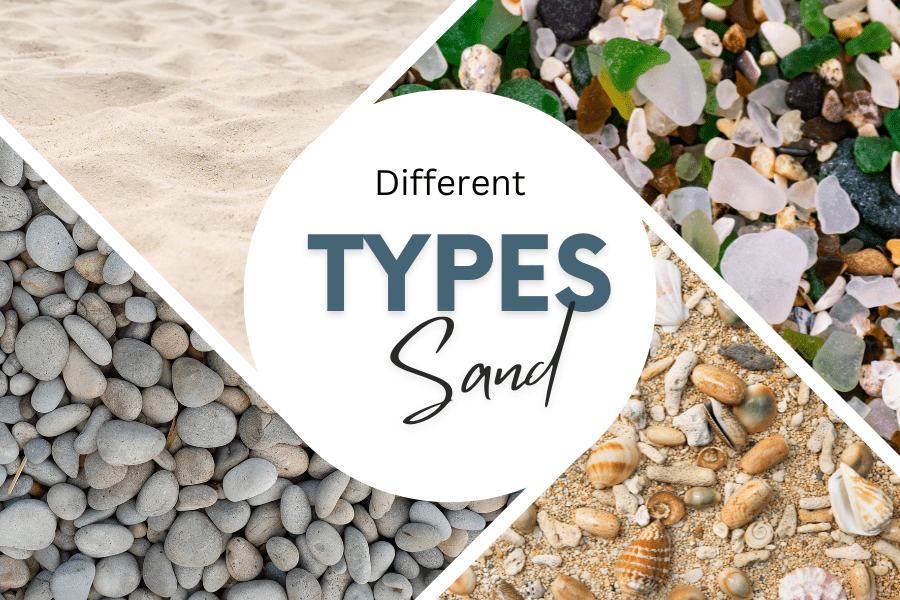
Types of Beaches
Everybody envisages a white sandy beach when we anticipate a beach vacation, where the sun sets over the ocean! As you explore your vacation planning, you will find there are numerous different types of beaches. Some extraordinary!
1. Seven Different Types of Sandy Beaches
Sand on beaches is formed through rocks and minerals being broken up by waves, tides and currents, whereas igneous or metamorphic rocks generate quartz and feldspar. (Feldspar forms about 60% of terrestrial rocks and contains varying amounts of potassium, sodium, calcium and/or lithium.)
Evidently, these give rise to light brown sand and in addition, if there is more iron oxide present, the sand will be a darker brown. Contrasting, white sand beaches are also composed of fish sediment.
“Did you know according to the Guinness Book of Records, the whitest sandy beach is Hyams Beach of New South Wales?”
Unknown
Green Sand Beaches
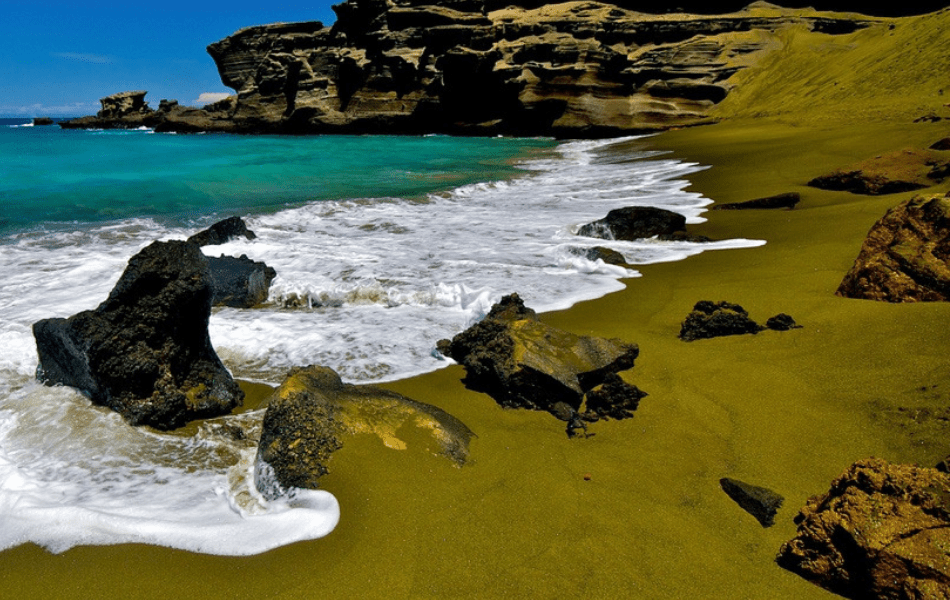
Surprisingly, there are only 4 green sand beaches in the world. Papakolea Big Island Hawaii, Guam, Norway and the Galapagos Islands.
| Papakolea – “The green sand is created by a common mineral in Big Island lava called olivine, which stays deposited on this beach because it is heavier than the other components of the lava.” You will need to hike to this beach. Have a squizz at Hiking Beginner Tips for Seniors: Crucial points to know so you can prepare yourself for this once-in-a-lifetime experience. | Talofofo Beach in Guam – once again olivine is also responsible for the green sand. This beach is very popular with surfers. You will see lighter and darker spots of green in the sand. The light during the day will enhance the greenness. |
| Hornindalsvatnet in Norway – This fjord lake is filled with green mineral deposits left behind from glacial movements thousands and thousands of years ago. | Galapagos Islands on the island of Floreana at Punta Cormorant – these isolated and not very well-known islands were formed by volcanoes. Over thousands of years, olivine crystals from the volcanoes have drifted to the beach. The colour of the sand is dazzling green. Tourists flock to see this uniqueness. See what you can do on these islands with Tripadvisor. |
Black Sand Beaches – something different

Black beaches are the result of lava and volcano minerals being broken down over centuries, however, the sand is not dirty! Definitely more black beaches than green beaches.
| KAIMŪ BEACH, Hawaii – this beach is a very young beach. 50ft of new sand covered the old black beach as the Kilauea volcano erupted in 1990 and the lava spread over the town and beach. Planting many new palm trees, by the community, makes the beach more appealing to the tourist who flocks to visually see this black sand. |
| Reynisfjara, Iceland – on the southern side of Iceland, near the charming village of Vík í Mýrdal, this stark black beach strikes out in vivid darkness. Basalt rock formations protrude out from the sea and the Atlantic waves hammer the cliffs and rugged rocks. |
| Karekare Beach, New Zealand – on the northwest coast of New Zealand, approximately 32 km southwest of Auckland, this black beach is striking and “The Piano”, an oscar Award-winning movie was filmed here. Seas rage against the steep cliffs, so it is not great for the swimmer but the surfers love it! |
Red Sand Beaches

| Kaihalulu Beach, on the island of Maui at Ka”uiki Head – is difficult to get to but if it is your desire to see this red sand beach, you will need to hike. Due to the fact that there are no roads that lead down to the beach, nudists take great delight in prancing around the beach naked. | Legzira Beach, Morocco – is famous for the two stone arches. One did collapse in 2016 as the waves and water are rather rough. When the other one will collapse no one is quite sure. The beach is 8km long which is fabulous for strolling along. It is 10 km from the city of Sidi Ifni. This beach is ranked 29th among the world’s best beaches. |
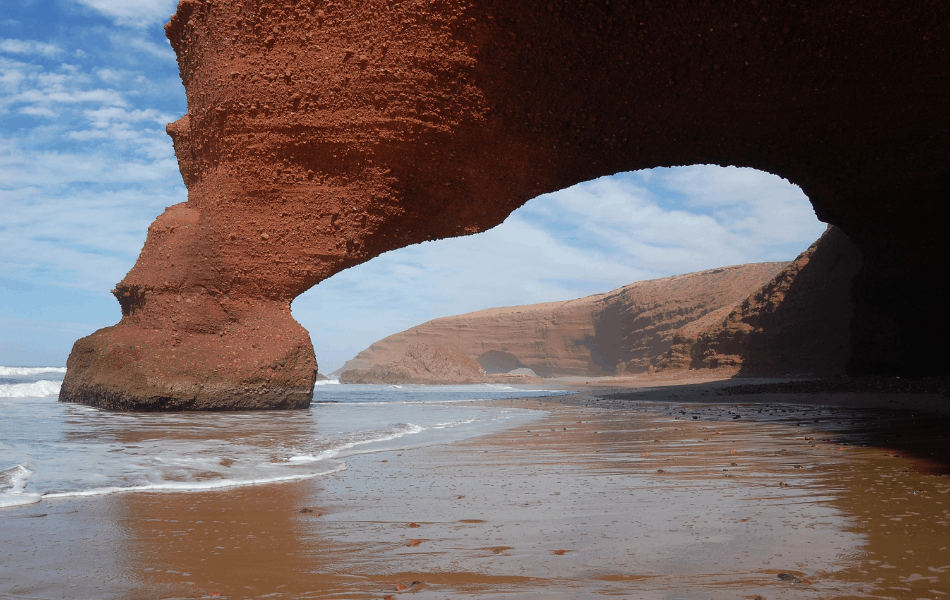
Pink Sand Beaches
| Horseshoe Bay Beach, Bermuda – an Instagrammer delight, exposing a very popular destination for tourists as the clear blue waters against the pink sand are quite a contrast and pleasure. The colouration of pink sands originates from organisms called red foraminifera (a blend of crushed coral and calcium carbonate). With dramatic rock formations and caves to explore, this beach is astonishing for a vacation. | Tangsi Beach known as Pink Beach, Indonesia – is one of the 10 pink beaches in the world. The waters are safe for snorkelling and swimming but keep your eye open for a Komodo dragon. |

Orange Sand Beaches
Ramla Bay, Island of Gozo, in Malta – this beach is often referred to as a red beach but it is distinctly a golden orange, with the colour originating from the iron content which results in the orange. Pleasant beach for swimming and snorkelling.

Purple Sand Beaches
Purple Beaches are a result of glacial activity, garnet particles are given off which creates the purple effect.
| Canada, has multiple purple beaches – Deschambault Lake, Prince Albert National Park, Good Spirit Lake., Candle Lake, and Hunter Bay among other areas, revealing the best-kept secret by the Canadians. |

Did you know you are not allowed to take sand home with you from the beach? it is illegal!
2. Glass Beaches

By law, you are not allowed to take the sea glass home with you from the beach. It is not permitted!
In contrast, the difference between sea glass and beach glass is sea glass has a more of a frosted appearance than beach glass and a different pH balance causing glass which has been weathered physically and chemically by the sea and found along the seashore. Beach glass comes from fresh water and is generally clearer than sea glass.
The glass gets tumbled over and over by waves and currents, crashing it against rocks and sea beds, and stirred up by salty water assists with the smoothing. Glass edges get weathered down to rounded corners and shapes so it is quite safe to walk on or pick up.
| Glass Beach, Fort Bragg just outside California – In 1906 there was a huge earthquake on the coast of Mendocino County, California. with all the rubbish being scooped into the sea including piles of glass. Also in the 20th century, the residents just threw their rubbish over the cliffs into the sea. Since then the rubbish has been cleaned up but the exquisite glass beach remains moreover a plus side was the enormous amounts of glass that was discarded has created this spectacular glass beach today. | Glass Beach, Kauai – Not many people visit this beach as it is close to an industrial site and in spite of this, when you are on the beach you feel nature has sprinkled a spray from a rainbow. It is worth a spectacular visit. |
3. Cave Beaches
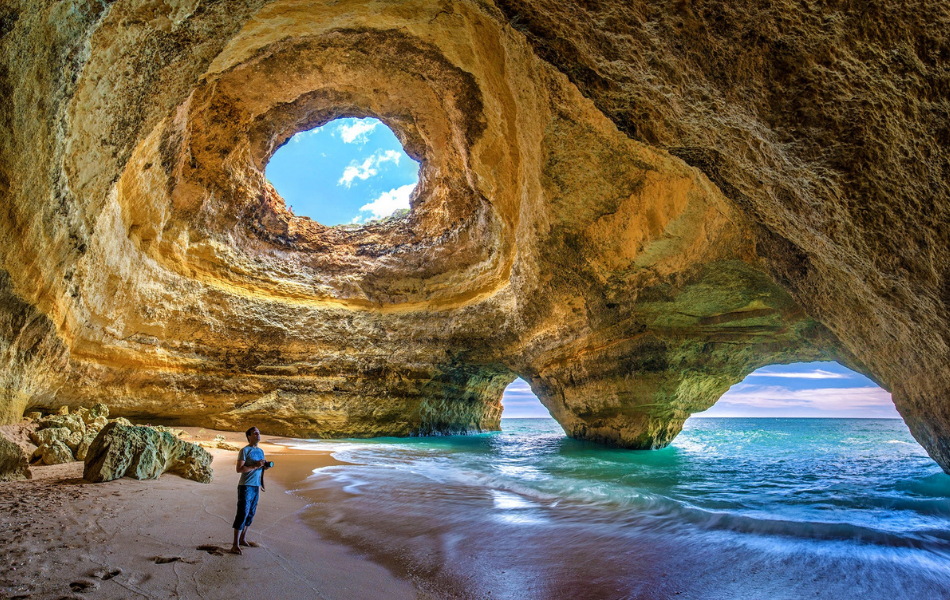
Why is it that caves absolutely intrigue us? People are passionate about them and every time you see one you feel you have discovered a great secret of a hidden paradise! Cave beaches are simply the best as the water flowing into the treasure is a double highlight!
Caves are formed from the water over a long period of time eroding the cliffs of the coastline, and when the tide goes out the rock is washed out. Always be aware of the high tides when going to a cave beach as this can be dangerous if you are stuck inside.
| Benagil Sea Cave (Algarve), Portugal – spectacular and best to view by taking a boat tour. Tour guides know the water and know what they are doing. Taruga Benagil Tours come highly recommended. This excursion is most certainly a once-in-a-lifetime experience! | Blue Cave, Montenegro – impressive and stunning! You can only visit this cave in Montenegro with a private tour guide, and bring your costume as there will be time to swim. |
4. Seashell Beaches

Bulk seashell beaches are a rarity and when you capture the emotion of having found the pirates’ treasure, emphasizing that there are very few of these beaches in the world where you find a mass of whole or partially broken shells all over.
| My best-beloved shell is the pansy shell. It is shaped like a pansy. They are found in the United States, along the coast of Mozambique and the South Coast of South Africa. | 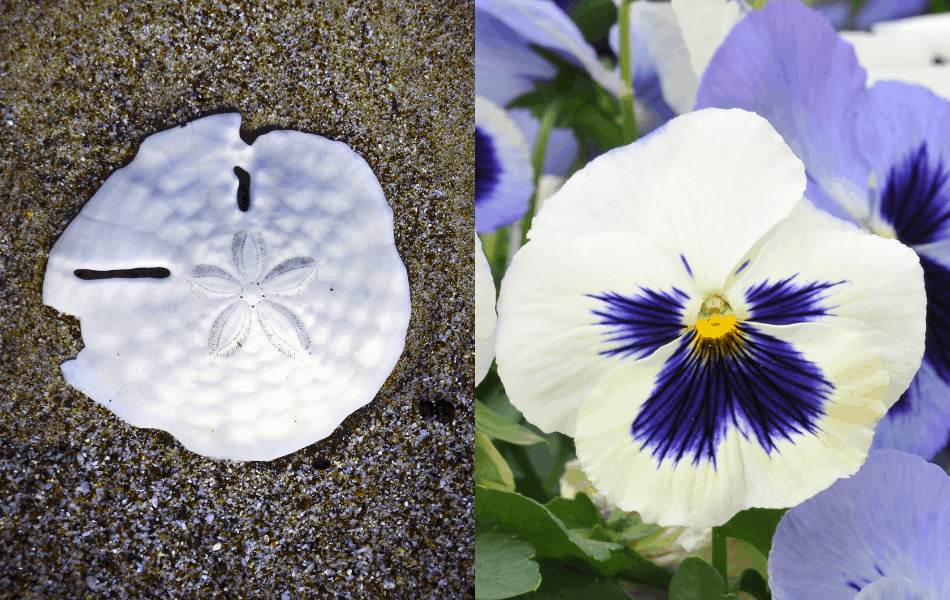 |
Shell Beach, Western Australia – the shells made up of the Shark Bay cockle have replaced the sea sand! Wear sandals when you hike over the mass of shells for 120 km with the depth of the shell “sand” 10 m deep. Participants swim or snorkel at this beach, exposing and magnifying the shells under the water with a snorkelling mask.
5. Pebble Beaches
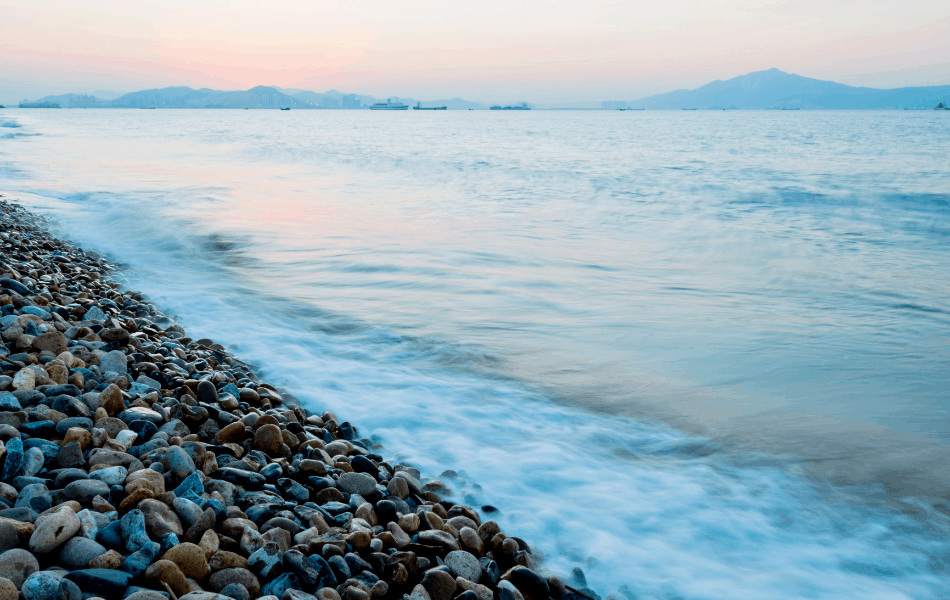
Another preferred term for pebble beaches is shingle or rocky beaches, as instead of sand, you find pebbles. Individual sizes of the pebble can be pea-size up to fist-size, exposing themselves throughout Britain, but Japan and New Zealand have many more pebble beaches.
| Chesil Beach, England | Located in Dorset, southern England. A selection of rocks, among others can be found here including pumice, granite, flint, quartzite and magnetite. |
| Valugan Boulder Beach, Philippines | 2.1km long. Perfect for hiking or birdwatching. The pebbles on this beach are enormous and are often classified as boulders. The pebbles came from a nearby volcano which is active, called Mt. Iraya. |
| Brighton Beach, Britain | Very popular pebble beach with lots of visitors and youngster skimming their rocks across the water. |
6. Rocky Beaches
Many get confused between pebble beaches and rocky beaches, the difference being, these beaches have large rocks that go right to the shoreline and are difficult or impossible to drive along. Solid rock predominates with only a bit of sand between the rocks.
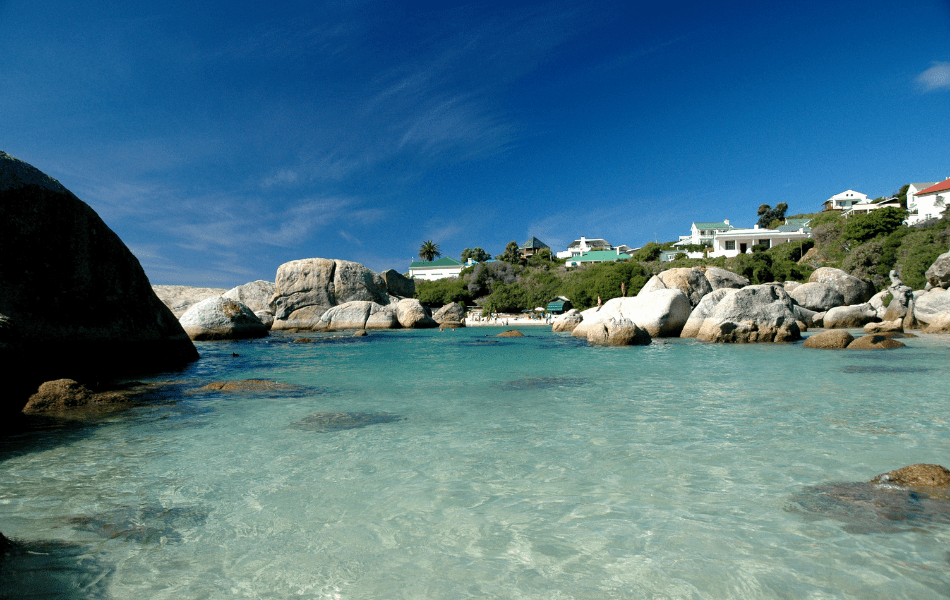
Amongst the rock pools prodigious sealife is uncovered, nevertheless, make sure you wear sandals to protect your feet. SIMARI Water Shoes for Men and Women from Amazon are a great choice.
Boulders Beach in the Western Cape, South Africa, where the penguins have claimed as their own is one of my best-loved beaches of which I have written about Cape Town and Boulders Beach in one article. My special place!
Ruby Beach in California is an enchanting example of a rocky beach. Kalaloch Lodge in the Olympia National Park describes it beautifully.
“Famous for the reddish sand that occasionally gathers and large, rock islands known as sea stacks, Ruby Beach is one of the most well-known and highly anticipated beaches to visit along the Olympic coastline. Here, flip-flops are optional, but highly recommended; you’ll need to wear something on your feet because Ruby Beach is a rocky beach, not a sandy beach. To truly explore the wonders of Ruby Beach, including the driftwood that lines the shore, bring a pair of flip-flops, water shoes, or old tennis shoes that can get wet.“
Kalaloch Lodge
Ruby Beach is the northernmost beach in the Kalaloch area, and it’s slightly less than 10 minutes north of Kalaloch Lodge. To get there, just take Highway 101, the same road that runs by Kalaloch Lodge. Trust us, you’ll want to add Ruby Beach to your itinerary
7. Promenade Beaches
Different names are given to these beaches, such as urban, city or promenade. I like “promenade” as everywhere in the world you go you generally come across one of these man-made structures. Take an extended walk alongside the ocean, relax on a beach chair or perch on a bench with a book, initiating memorable, relaxing, Instagram moments!
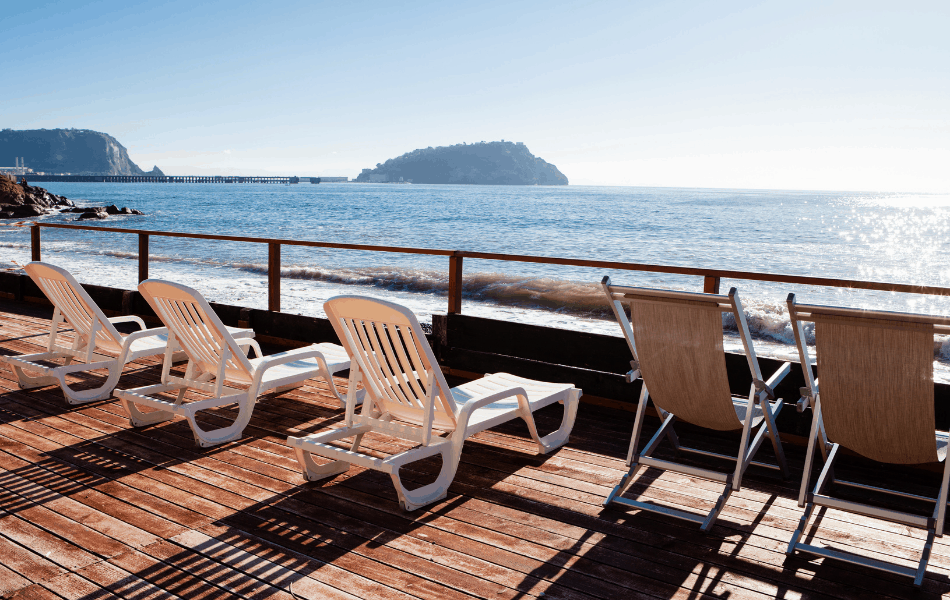
“The ocean is everything I want to be. Beautiful, mysterious, wild and free.” – on Beaches best to know about
5 Dangers on Beaches to Be Aware of
1. Rip Tides
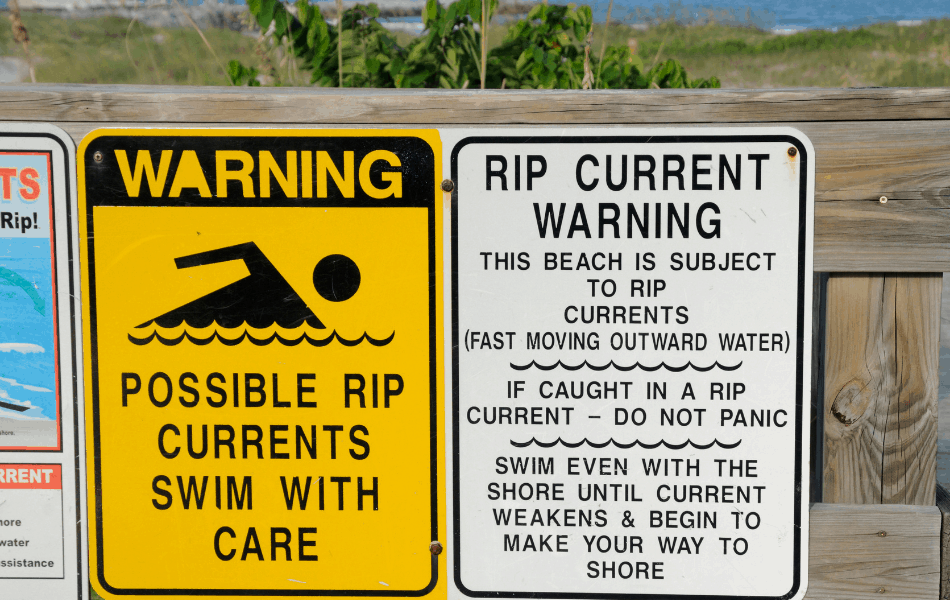
No matter which beach you swim at in the world, every beach will have rip tides and strong tides can be very scary if you are carried out by one. When pulled out, don’t fight it, rather float with the current, it will break, and then you can once again swim back to shore.
Swimming in an area that is not “flagged”, nor has a lifeguard is very silly, especially if you are a newcomer to the beach. Certified experienced guards do know their currents, and are trained to be aware of sharks, the presence of harmful sea creatures such as bluebottles and jellyfish and other unknowns to you and me.
2. Sharks

Prior to swimming at a beach, you are not familiar with, question whether there is a presence of sharks in that location and if there are shark nets. Only swim in the demarcated areas that are under the watchful eyes of a lifeguard, even so never swim at night.
- Do not swim far out
- Take precautionary measures
- Be aware of your surroundings
- Watch seabirds and jumping fish, nature lets you know if a predator is nearby
- When bleeding do NOT swim
- Don’t swim near piers or fishing areas
Sun and Dehydration
Have a whale of a time on the beach of your choice, but did you know more people have died from heatstroke and heat exhaustion than hurricanes?
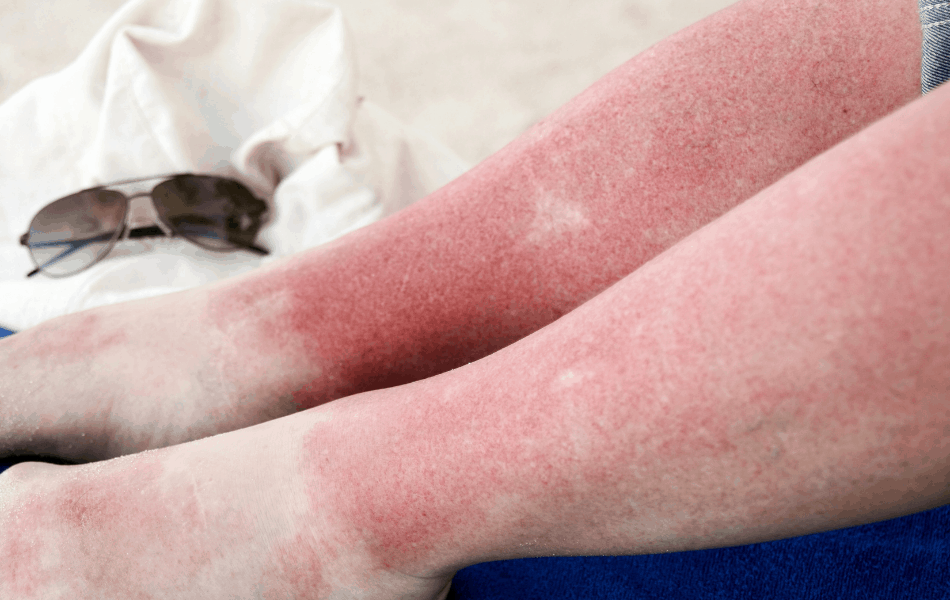
When you are relaxing on the beach a prerequisite is sunblock! CETAPHIL Sheer Mineral Sunscreen Stick for Face & Body is one I know well, have tried it and works. You can order online from Amazon.
Drink lots of water and refuel throughout the day so take down a considerable amount onto the beach with you. Heat exhaustion can be scary and even life-threatening. Imagine feeling weak and unable to move when you are in the water because you are suffering from dehydration.
Pollution
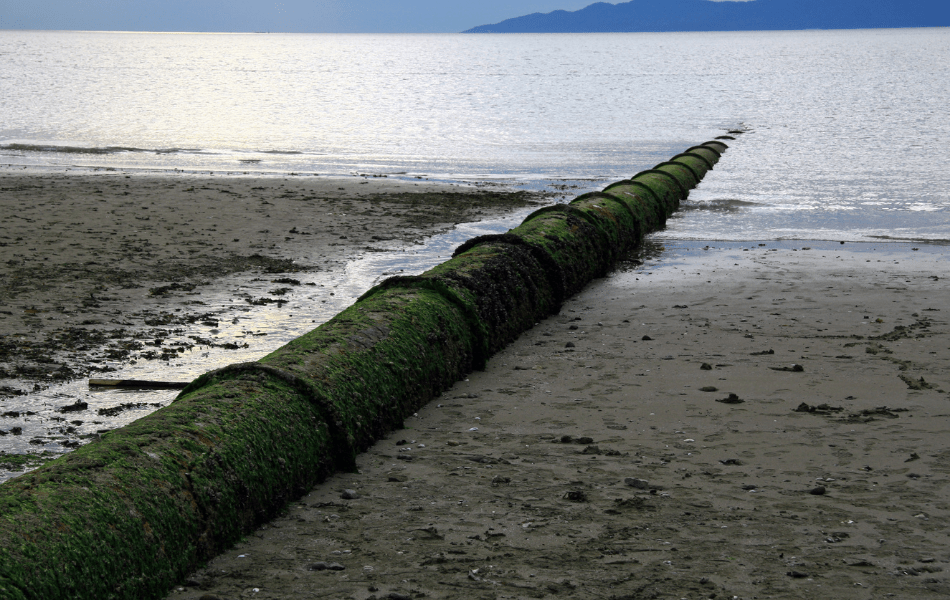
Swimming in clean water is imperative so check the Environment Agency website of that country to see how clean the waters are.
Even though there have been substantial efforts to clean up our beaches throughout the world, the question is, is this enough? Pollution on the beaches is not pleasant and one has to watch while walking on sharp objects that are hidden in the sand, such as broken glass and tin.
Whenever I am walking where fishermen have been, (as I have been hooked by a hook before), I wear my swim shoes and even my grandkids now have some (which also protect the little feet from the heat of the sand). Practical on the sand, pebbles, glass stones, waves and rocks and I suggest VIFUUR Water Sports Shoes Barefoot as they are extremely comfortable, and come in a selection of colours and designs.
Sewage microorganisms from the cities and farms that come down either in rivers or sewage pipes are the most awful causes of illnesses, such as skin, throat, ear and nose infections, gastroenteritis, and even sometimes hepatitis and e-coli. So after heavy rains, don’t swim in the sea. Find out if there are sewage pipes close to the beaches you are visiting.
Lightning

Lightning travels very easily through salt water., thereupon any sign of a storm get out of the water and shelter in a building or bathroom or even your car. Lightning can kill numerous people in the water so do not take a chance. Only return to the sea after 1/2 hour after the storm has passed.
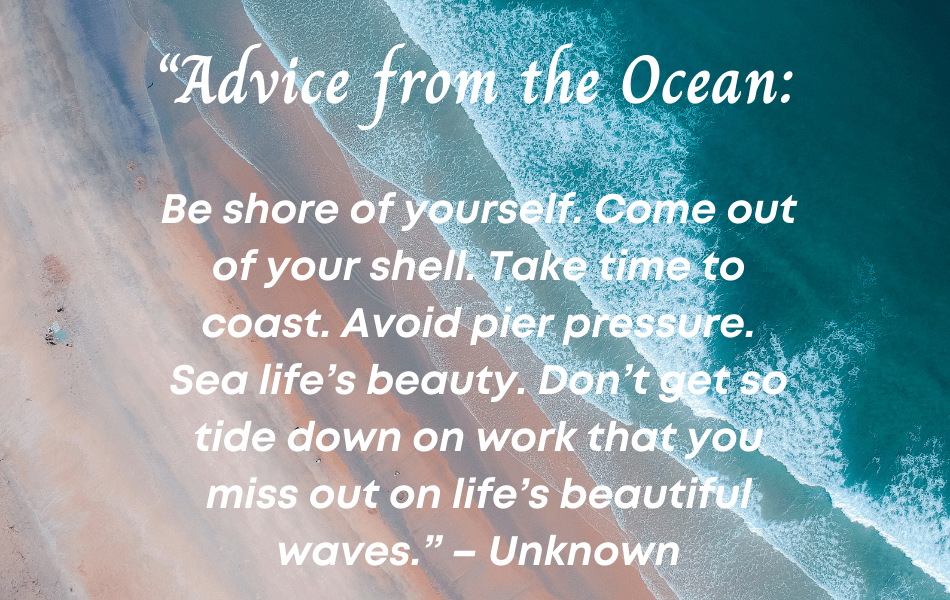
Which beach would you like to visit on vacation? Tell us why in the comments below, so others can be inspired to visit too.
Recent Posts
Discover insider tips to find cheap flights from the UK, save on easyJet, Ryanair & BA, and score the best weekend and last-minute deals. Why You’re Paying Too Much for Flights Most UK...
Discover the sounds of travel, from laughing kookaburras to market chatter, church bells to ocean waves - a journey heard as much as seen. It always starts with a sound. The other day, walking...

